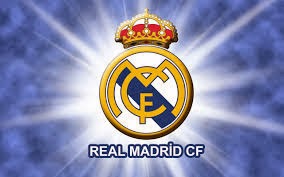Football was introduced to Spain by students of the Institución Libre de Enseñanza. They
included several Oxbridge graduates. In 1895 they founded the club Football
goal, playing on Sunday mornings at Moncloa.
In 1900 this club split into two different clubs New Foot-Ball de Madrid and
Club Español de Madrid. The president of the latter club was Julián Palacios. In 1902 the latter club split again, resulting in
the formation of Sociedad Madrid FC
on March 6, 1902. The first president was Juan
Padrós Rubió; the first secretary was Manuel Mendía; and the first
treasurer was José de Gorostizaga. Juan Padrós Rubió would be later succeeded by his
brother, Carlos Padrós from Spain.
In 1905, only three years after its foundation, Madrid FC already won its first
major title in the Estadio Chamartín
stadium. The team won the first of four consecutive Copa del Rey - titles (at
that time the only statewide competition). In 1912 they moved to their first
ground called Campo de O'Donnell after moving between some minor grounds.[1] In
1920 the club's name was changed into Real Madrid after King Alfonso XIII, a
reputed football fan, granted the title of Real (Royal) to the club. However,
when the Second Spanish Republic was proclaimed the club dropped both the word
Real and the royal crown from the emblem, being known from then and until the
end of the Spanish Civil War as Madrid C. F. only. The addition of the purple
band to the emblem dates back to the Republican period and has remained there
since then. In 1937, due to the stagnation of the ongoing civil war, all
activity disappeared and the club virtually ceased to exist.
Before becoming President in 1945, Santiago Bernabéu Yeste had already carried out the functions of player,
first-team captain, club maintenance, first-team manager and director, in an
association with the club that lasted nearly 70 years. He was responsible for
rebuilding the club after the Spanish Civil War, and under his presidency, the Santiago Bernabéu Stadium and the Ciudad Deportiva. Real Madrid has a
newly named stadium which is the Alfredo
di Stéfano Stadium.He also reorganized the club at all levels, in what would become the normal operating hierarchy of professional clubs in the future, giving every section and level of the club independent technical teams and recruiting staff such as Raimundo Saporta. Moreover, under Bernabéu's tutelage, during the 1950s former Real Madrid Amateurs player Miguel Malbo founded Real Madrid's youth academy, or "cantera", known today as La Fábrica.
Finally, beginning in 1953 he embarked upon a strategy of signing world-class players from abroad, the most prominent of them being the signing of Alfredo di Stéfano and built the world's first truly multinational side. During Bernabéu's presidency many of Real Madrid's most legendary names played for the club, including the aforementioned Alfredo Di Stéfano, Ferenc Puskás, Francisco Gento, Héctor Rial, Raymond Kopa, José Santamaría, Miguel Muñoz, Amancio, Santillana. Under the administration of UEFA, it is the world's premier club tournament.
It was under Bernabéu's guidance, that Real Madrid became established as a major force in both Spanish and European football. Before passing away in 1978, Bernabéu had been the club's president for 33 years, during which he won 1 Intercontinental Cup, 6 European Cups, 16 La Liga titles, and 6 Spanish Cups.


No comments:
Post a Comment